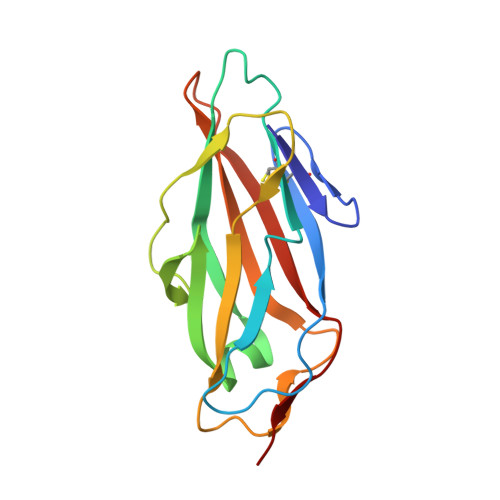Structures of C-Mannosylated Anti-Adhesives Bound to the Type 1 Fimbrial Fimh Adhesin
De Ruyck, J., Lensink, M.F., Bouckaert, J.(2016) IUCrJ 3: 163
- PubMed: 27158502
- DOI: https://doi.org/10.1107/S2052252516002487
- Primary Citation of Related Structures:
5AAL, 5AAP, 5ABZ - PubMed Abstract:
Selective inhibitors of the type 1 fimbrial adhesin FimH are recognized as attractive alternatives for antibiotic therapies and prophylaxes against Escherichia coli infections such as urinary-tract infections. To construct these inhibitors, the α-d-mannopyranoside of high-mannose N-glycans, recognized with exclusive specificity on glycoprotein receptors by FimH, forms the basal structure. A hydrophobic aglycon is then linked to the mannose by the O1 oxygen inherently present in the α-anomeric configuration. Substitution of this O atom by a carbon introduces a C-glycosidic bond, which may enhance the therapeutic potential of such compounds owing to the inability of enzymes to degrade C-glycosidic bonds. Here, the first crystal structures of the E. coli FimH adhesin in complex with C-glycosidically linked mannopyranosides are presented. These findings explain the role of the spacer in positioning biphenyl ligands for interactions by means of aromatic stacking in the tyrosine gate of FimH and how the normally hydrated C-glycosidic link is tolerated. As these new compounds can bind FimH, it can be assumed that they have the potential to serve as potent new antagonists of FimH, paving the way for the design of a new family of anti-adhesive compounds against urinary-tract infections.
- Université Lille, CNRS, UMR 8576-UGSF-Unité de Glycobiologie Structurale et Fonctionnelle , 59000 Lille, France.
Organizational Affiliation:



















